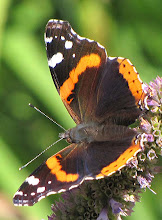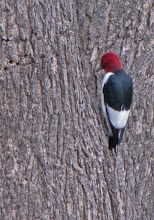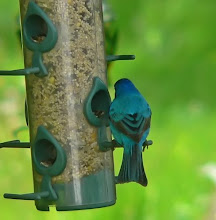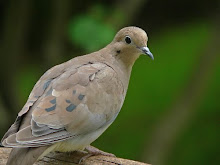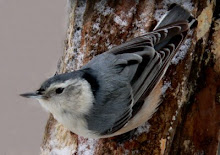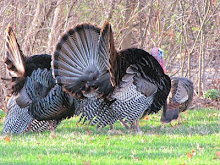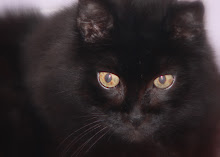
North central
Illinois came within an inch of breaking the record for the snowiest winter ever.
Although we had major thaws in January and February, they were always followed by another blizzard dumping a few more feet of snow.
I fed an amazing numbers of birds last winter. The heavy snow cover and bitter temperatures made survival a challenge for the birds that didn’t migrate to warmer climates.
Filling up bird feeders after work in the winter twilight was a challenge. Wind chills below zero numbed my fingers and froze my cheeks. Icy pathways sent me sprawling more than once. Too bad I couldn’t get a video of my more graceful back flops. Bird seed flying everywhere, hat sailing off on a gust of wind. Gingerly I would pick myself back up, hoping no important bones were broken.
On gloomy Saturday mornings, sitting by my window with a hot cup of chocolate and my camera, it all became worth while. My yard was alive with song and color--red cardinals, gray-blue jays, taupe mourning doves, black and white woodpeckers, and native sparrows in every shade of brown and gray.
It’s fascinating just to sit and watch the birds interact. Some are bullies and some are pacifists, some silly and some sly. The blue jays can be heard long before they arrive. Loud and assertive they scatter smaller birds when they fly screaming into the yard. Cardinals, on the other hand, take flight at the least sign of danger-- real or imagined. A blowing leaf can send a group of timid cardinals into terrified flight. The red bellied woodpecker is a pretty laid back bird, not aggressive, but no birds get too close to him either. Since he spends his life hammering on wood, I expect a peck from him would seriously hurt another bird. He probably sees himself as the Rambo of birds, not looking for trouble, but not running from it.
Three Downey woodpeckers spent their days busily flying from one suet feeder to another. They were the first to find my homemade peanut butter/cornmeal mix and they seemed to like it better than the Kaytee brand suet I buy. One female Downey hates the other female. Her ambition in life is to drive the second female far, far away. She sits high up and watches for her rival and then swoops down and drives Number 2 from the suet feeder. Could this be jealousy over the one loan male? What’s that old country song “Your Not Woman Enough to Take My Man”?
The hairy woodpeckers and the red bellies weren’t as impressed by my homemade peanut butter concoction; they are loyal consumers of the Kaytee brand.
The little nuthatches are a delight. They are into every nook and cranny, even landing close to the windows and peering in at me. They grab a seed or a beak-full of suet and fly off somewhere to hide their treat for later enjoyment. Wonder how many sunflower seeds they have stashed under my shingles?
The chickadees have to be one of my favorites. They are never still. High energy, curious, bold. They flit from feeder to branch with their prize and hammer the seed open with tiny beaks while holding it with tiny toes. Chicka-dee-dee-dee they call constantly. I can’t watch these obviously happy little birds and not smile.
The starlings are tough guys form the hood. They come in gangs and intimidate with sharp stiletto beaks and their comparatively larger size. They aren’t my favorite birds but they get fed with the others. Flocks of starlings do a good job of insect patrol on my yard in the summer. From a distance they are a singularly ugly bird but up close they have an interesting coloration.
Looking back, it was a very long winter here, but signs of spring are beginning to appear. The trees have a green haze of tiny leaves. Plants are slowly waking up. The daffodils and forsythia are blooming just a couple weeks later than usual. Often gardeners have annuals planted by May first--not this year.
Winter bird visitors to my feeders: Cardinals, White Breasted Nuthatches, Blue Jays, American Tree Sparrows,

Fox Sparrows, White-crowned
Sparrows, White-throated Sparrows, English Sparrows, Hairy Woodpeckers, Downey Woodpeckers, Red Bellied Woodpeckers, Black-capped Chickadees, Gold Finches, House Finches, Cow Birds, Juncos, Red Polls, Mourning Doves, Starlings, and one Red Tailed Hawk.
The birds of summer are returning now. More later.
 Absolutely the best pie. Use fresh or frozen rhubarb stalks.
Absolutely the best pie. Use fresh or frozen rhubarb stalks.




















